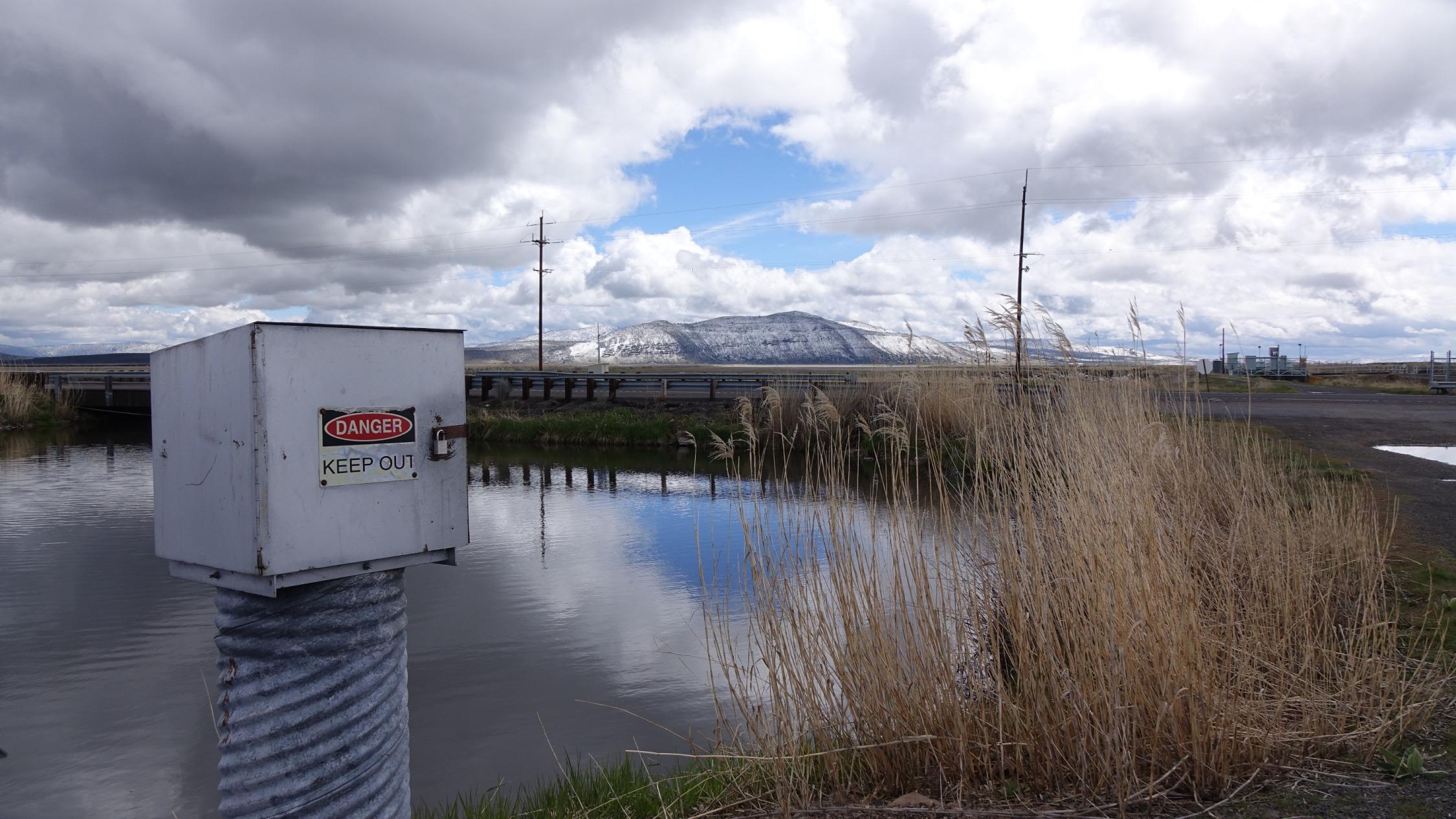
An irrigation canal connects the Lower Klamath National Wildlife Refuge to the Klamath River in this 2017 file photo.
Jes Burns, OPB / EarthFix
Oregon could have really used some April showers.
Unseasonably warm temperatures and minimal precipitation this spring have left the landscape parched pretty much statewide, setting up what’s almost certain to be the worst drought in decades and perhaps a century.
The latest water supply outlook report from the Natural Resources Conservation Service of Oregon shows snowpack, stream flows and reservoir levels all on the decline. The entire state registered on the U.S. Drought Monitor as “abnormally dry” or worse as of May 4, and parts of Southern and Central Oregon qualify for “extreme” and “exceptional” drought.
“Unfortunately, in this time, with these conditions, people need to be prepared to deal with less water available,” said Scott Oviatt, the snow survey supervisory hydrologist for NRCS Oregon.
Related: Almost all of Oregon poised for drought to start the summer
Oregon typically has very well-defined wet and dry seasons. The water year starts Oct. 1, which is when the state starts building its water supply through rain and high-elevation snow for the following summer.
But this year’s wet season wasn’t very wet, which has left Oregon trying to play catch-up. Even the highest water-year-to-date precipitation totals in Oregon lingered below average.
“If you’re not reestablishing the groundwater and you’re not building up those stream flows going into winter, you’re starting in deficit mode,” Oviatt said. “When you have adequate or normal snowpack, you’re still going to be behind.”
Many river basins did have adequate or, in some cases, above-normal mountain snowpack heading into the spring. However, the warm temperatures that delighted many an outdoor recreationist also contributed to a “very rapid meltdown” of snowpack.
As of Saturday, the snowpack in the Malheur and John Day basins had melted out entirely, and many others were on track to melt out earlier than normal.
Related: Cascade snowpack more vulnerable to climate change than inland neighbors, study says
The outlook report urges water managers in most Oregon basins to prepare for significantly reduced water supplies this summer.
Nine Oregon counties have, as of early May, requested drought emergency declarations from Gov. Kate Brown, which free up additional resources to help water users and managers make it through the year. Brown has declared drought emergencies in three of those counties: Klamath, Lake and Jackson.


